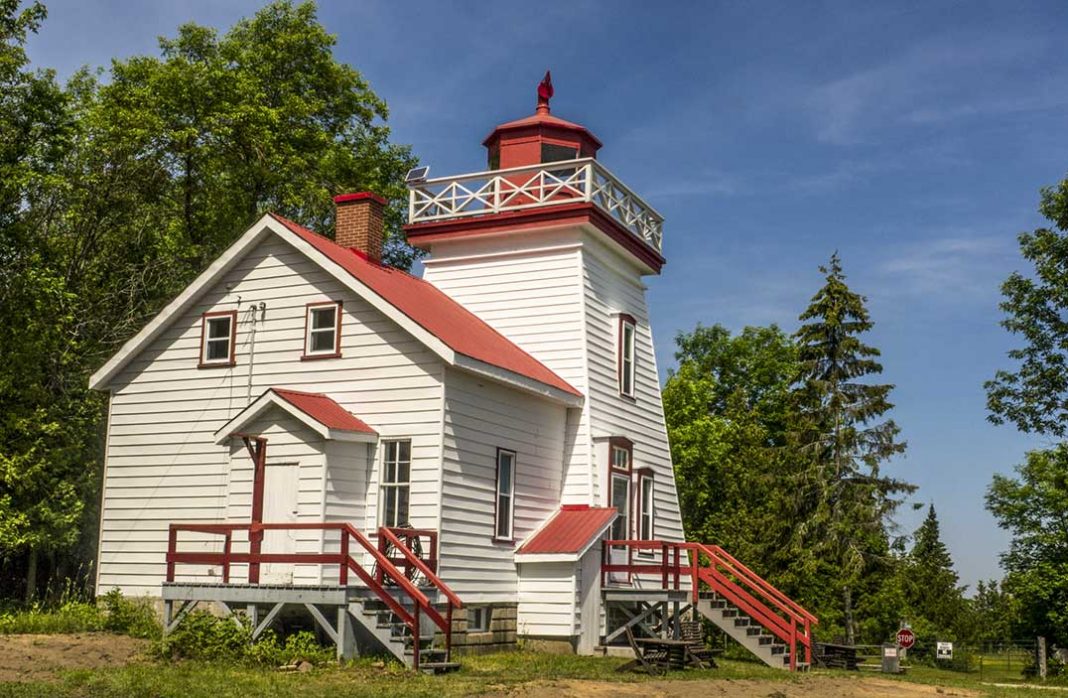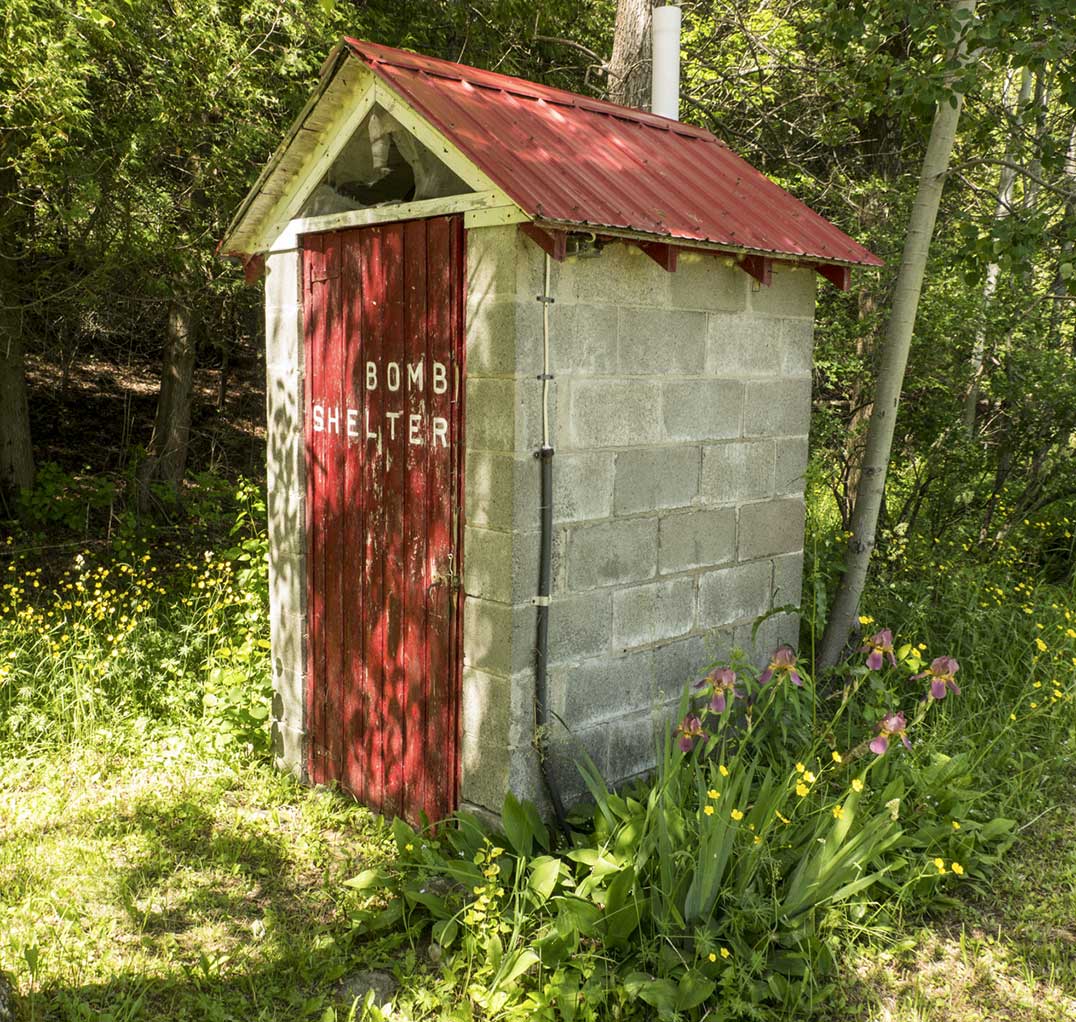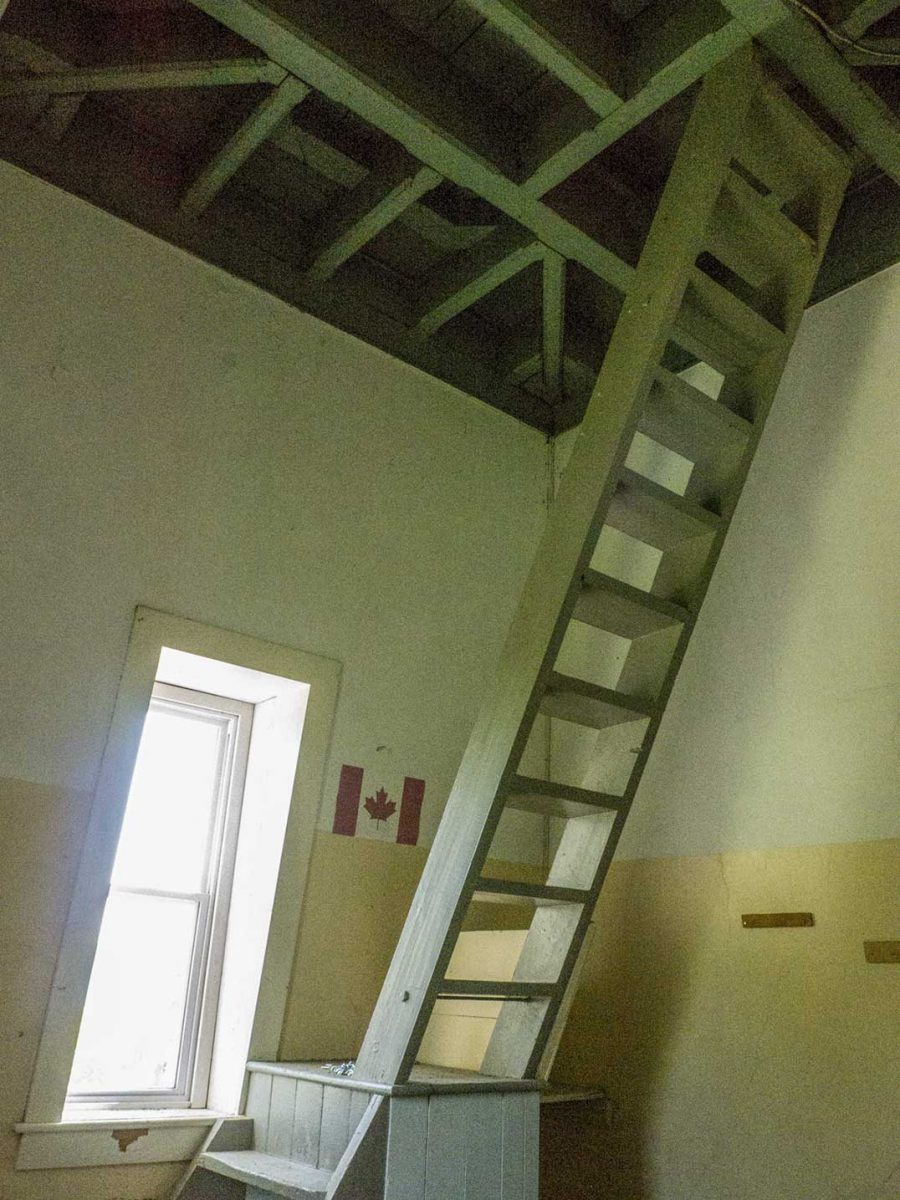The historic lighthouses of Manitoulin Island are evocative outposts of the mysterious.
Built to pierce a lifesaving light into fog-shrouded or blizzard-blanketed expanses of Lake Huron and Georgian Bay, their classical, white-painted forms are the ghost-like keepers of long-whispered stories, now become legends.
Between 1866 and 1918, nine lighthouses were built on Manitoulin Island and all have been designated of significant heritage value. Three of these were constructed in the ‘Georgian Bay style,’ with a home on the second floor and the lantern light on the top floor, reached from inside by a steep ladder up the light tower. Mississagi Strait (1873) in Meldrum Bay, Janet Head (1879) in Gore Bay and Strawberry Island (1881) near Little Current are outstanding, original examples of this style.
Within their clapboard walls, families of the keepers lived, children were born and gardens and livestock kept. At the beginning, barrels of whale oil had to be hoisted up the narrow steps to keep the light lit, later powered by kerosene, diesel generator and batteries and finally electricity and solar LED panels. In remote, isolated locations at the mercy of all the elements, the lighthouse lights and foghorn were true beacons and lifelines for the weary, storm-tossed, sometimes lost and in great peril, sailors of the Great Lakes.
At Janet Head Lighthouse, at the northeastern entrance to Gore Bay’s namesake wedge-shaped port, the square white wooden building with red trim and 40-foot light tower gleams brightly in the summer sun. On the steps is Miriam Wailes, daughter of the last live-in keeper of the lighthouse, Stephen Fletcher.
Ms. Wailes knows her Janet Head Lighthouse lore and was fortunate to spend her summers here as a young adult. In the 1960s, all lighthouses were automated, obliterating the need for a keeper entirely; when her dad applied for and got the job in 1967 to ‘keep’ the lighthouse, it no longer required keeping and was unpaid. The light still turns in a unique sequence of flashes that identifies its location for navigation but, with automation, there was little for a keeper to do but report on problems, if the light went out and, just by being there, minimize vandalism. Miriam’s dad ran a grocery store in town, Steve’s Grocery, while mom Muriel and the family out at the lighthouse for the summer played games, swam and sunbathed at the bay’s edge and roasted wieners and marshmallows at the fire pit in the evenings. “Our imaginations ran wild out here,” says the family’s keeper of memories.
“When we first saw the lighthouse, it had been unused for several years and badly vandalized,” recalls Ms. Wailes. “There was no insulation or electricity, we used coal oil lamps. After a few years Hydro allowed for one line so we could have light in the kitchen.” Some of the plum and apple trees still stand in the yard and the outhouse, built by her father, still wears his ‘Bomb Shelter’ sign.
Lighthouse keepers kept diaries, explains Ms. Wailes, in which they recorded first and last lamp lightings for the year, ships’ passings and other events, and she has kept her mother’s ‘guest book’ that dates back to their first year there. In it are notes on weather, first and last day in the lighthouse, first swim (often Muriel was in before the ice had melted in the bay), who won at Monopoly and other markers of a summer well spent.
Some stories, undoubtedly passed on from keeper to keeper over almost a hundred years, still haunt the woman who has known Janet Head since she was a girl.
Perhaps none is more vivid than the story about the first lighthouse keeper, Robert Boyter, a Scotsman who had come to Canada in 1868 only to suffer momentous personal tragedies. His diary contains heart-wrenching entries for the winter of 1885: “I am sorry to say my remarks this time are of a very melancholy nature,” he writes, describing how his wife and eldest son had left on the 11th of April to go across the lake ice to the son’s farm on the North Shore with a yoke of good oxen. “But,” he continues, “owing to the depth of snow and water on the ice,” and the oxen tired, the party camped out overnight on an island before arriving in Spanish Mills at noon the next day. Chilled to the bone, his wife, Isabella, died on April 19 and although his son survived the ordeal, “if he gets over it he will be crippled for life,” Mr. Boyter concludes grimly.
The first rescue team of two men, ‘Mr. Currey and Doctor Johnson,’ left Gore Bay with horse and sleigh and reached the son with medical help. On the return trip, engulfed in a fierce blizzard, they became disoriented and hopelessly lost; they decided to give the horse free rein and it found its way back to Gore Bay with the two men safely in tow.
But that was not the end of the tragic tale. Robert Boyter, too, was making for the North Shore over the ice from Gore Bay to retrieve the body of his wife. George Thorne and his team of horses, Mr. Boyter, two young women and one young man were flying over the icebound lake, “when,” the lightkeeper writes, “there came one of the worst snow storms I ever witnessed; so blinding was it we could not tell in what direction we were going and so wandered about the ice until Monday morning.”
When it was over, one young girl had frozen to death, another was “in doubtful state,” the young man’s legs had to be amputated as had been both legs of Robert Boyter’s son, David. One horse died just as it reached the town. Fate was kinder to Thorne and Boyter, who were taken to the Ocean House Hotel. Almost as an afterthought, the diarist adds, “I had my hands and feet frozen … the doctor says I will be alright in a short time.”
Before signing his name to the entry, he pens the most understated of understatements: “I might add that this has been the severest winter I have ever witnessed.”
The last ‘real’ keeper at Janet Head, George Thorburn, would bicycle in from town to tend to the light and record his share of local stories. But the most mysterious writing left behind by Mr. Thorburn was the letter found tucked into the lathe and plaster of the kitchen wall behind the stove by her father, Stephen Fletcher. The note, now in the Gore Bay Museum, was perhaps too personal for the diary, a reflection on failing health and the prospect of losing his job to automation.
And so the legends of the lightkeepers of Janet Head are handed down, misfortune and happy memories in equal measure.
After remaining closed for a number of years, the Janet Head Lighthouse is enjoying a renaissance of fresh attention. Its function remains undiminished and its mystery lives on.
Janet Head Lighthouse, Lighthouse Road, Gore Bay: Open to visitors in July and August on Tuesday, Wednesday and Thursday from 12 noon until 4 pm.







